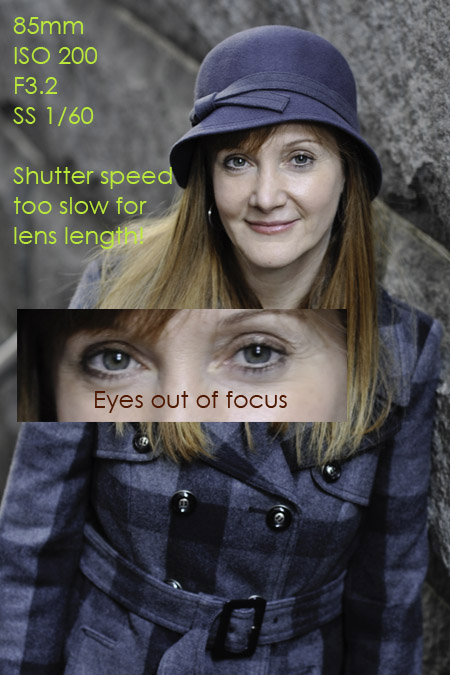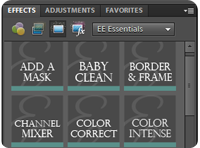Focus, focus, focus. That is an important word in the photography world, isn’t it? Those first starting out with a DSLR do not realize that there is way more to focus than putting the viewfinder to their eye and taking the picture. Oh boy, it is so much more than that. But, where to start? I am not sure, but will do my best….
Factors that can interfere with your focus are:
- Focus settings in camera
- Aperture
- Shutter Speed
- Exposure
- Position
- ISO/noise
Focus Settings in Camera:
- Single Point –User selects focus points using the camera’s selector tool (arrow pad on Nikon, different on Canon). Camera focuses on subject in selected focus point only.
- Dynamic Area –User selects focus point manually, but camera will focus based on info from surrounding focus points if subject leaves selected point. Focus may change when using this mode with AF-A or AF-C auto focus modes.
- Closest Subject –Canon Focuses on the closest thing to the camera.
- Auto Area –Camera automatically detects subject and selects the focus point.
I use single point or dynamic, never, ever closest subject or auto area. Leaving it on one of the two latter choices is giving your camera way too much control.
For instance, what if you are taking pictures of your baby, wanting the focus to be on her face and she sticks her arm out in front. The camera will jump the focus to her arm and that isn’t usually the picture you will want.
In regards to focal points, most photographers typically use single point focus so they can choose the focal point.
- Moving focal points – They use the selector circle/wheel to navigate to the focal point that is where the eye (when shooting living things) is so that the eyes will be in focus. If a flower, they move to the center of the bloom or to a petal, whatever.
- Using center focal point and recomposing – they keep the focal point in the center and put that focal point over the eye/subject and hold down the back button focus or shutter, then move the camera to be the composition they want.
- Most wedding photographers use this method as it takes too much time to be moving focal points and they are usually having to shoot quickly.
- I prefer this method as well and use it most of the time.
Aperture:
Aperture, the size of the opening on your lens, will greatly affect your focus.
A small an F# (wide open aperture) gives a shallow depth of field, which will cause most of your image to be out of focus except for the small area you focused on.
If your F# is too low for the type of shot you are taking, your image will be OOF. Here are some more healthy apertures:
- F1.8* –F3.5 = use for single subjects who are not moving
- F4 = use for groups of 2 to 4 or a moving single subject
- F8 –F16 = use for groups of 4 or more or multiple moving subjects
If using wide apertures like F1.4 to F2, make sure the subject is looking right at you and not at a tilt.
Each lens (usually the prime lenses) have a “sweet spot” meaning that the focus is sharper at that particular focal length.
- For example, you try and try to shoot at f1.8 but never seem to get good focus, try f2.0 or f2.8, something like that and you will eventually find that one aperture that helps you nail your focus more often. That is that lens’ sweet spot; it will be different on each lens.
- Embrace the focus. So many people want to shoot wide open (small f#) but the depth of field is very shallow, giving a small margin for error. I prefer to shoot at f3.2 or f4.0, not only to give me more wiggle room, but also because I prefer to see all of the face in focus, not just the eyes.
The picture below shows how a wide aperture (f1.8), my position to her (see below) and the tilt of my daughter’s head caused the back eye to be out of focus.
Shutter Speed:
Shutter speeds that are too low for the subject or setting will cause an image to be out of focus. The slow shutter is staying open longer to let more light in, which means your subject or you may move during this time, causing the image to be blurry.
Keep your shutter speed at twice the length of your focal distance. On a prime lens, that is the length of your lens.
- Ex: 35mm f1.8 lens = min shutter speed of 1/70
On a variable aperture lens, twice the focal length you are zoomed to.
- Ex: 18-55mm f3.5-5.6 = min shutter speed of 1/40 at 18mm length and min of 1/110 at 55mm length
If shutter speed is below 2 x length of your lens you need to do one of two things, both which will speed up your shutter speed:
- Increase your ISO so that your camera is MORE sensitive to light.
- Widen your aperture (smaller F#) so that MORE light is coming in through your lens opening.
If you cannot change the ISO or aperture and your shutter speed is too slow for hand-holding, use a tripod. Keep one in your vehicle, so you are always prepared.
If your shutter speed is still too slow, no matter the change in ISO and aperture and a tripod won’t help because your subject is moving also, consider using a flash like a speedflash (external flash) or your on-board flash with a product like the Lightscoop. Use of a flash will give you the shutter speed you need to capture a sharp image.
In my opinion, too-slow shutter speed is the cause for most out-of-focus images. I cannot tell you how many times I have looked at someone’s image (upon request for help to get sharper images) and the shutter speed was way too slow.
What can you do if you are as fast as you can get and it still is not fast as you need for the subject? Try shooting in a burst mode so that you get many shots in a very short amount of time, more than likely one of those will be in focus. On my Nikon I have the option for one shot, where each time I press the shutter it does just one shot. Or, I can set it to Continuous Low or Continuous High, meaning if I press and hold down the shutter, it fires off 3 or 6 or so shots while I am pressing down.
Below is an example of slow shutter speed causing an OOF picture. It make look in-focus because it is a small image online, however, when its full size and zoomed into 100%, the eyes are definitely out of focus (see the 100% crop below).
Position:
How you and your subject is positioned will affect the focus of your camera.
Each lens has a minimum focus distance, meaning the minimum distance you need to be from your subject before it will focus. Typically, as your lens focal length gets larger, so does the minimum focal distance, unless it is a macro lens. Check your camera brand’s online site, in the lens section, under Specifications or something like that.
- With my 85mm f1.8, I have to be about 3 feet from my subject.
- With my 50mm f1/4. I need to be at least 1.5 feet from subject
- With my 24mm f2.8, I should be at least 1 foot away from subject.
The wider the aperture you use (smaller f numbers) the smaller the focal plain wiggle room you have.
- If using a wide open aperture (small F#), make sure your subject is facing you straight on, not at an angle or tilt.
- Smaller F#’s (wider apertures) require the desired targets (usually eyes) to be on the same plane.
- When shooting a picture of two people and using an aperture lower than F4, make sure they are on the same plane.
- Check out a Depth of Field Calculator to help you know what aperture would be best for your lens, aperture and distance from subject. And, to help you understand Depth of Field more, check out a tutorial at Cambridge in Color that is very thorough.
As a general rule, focus falls back.
- When shooting two or more people, if you focus on the person in the back plain, more than likely the front person will be out of focus.
Exposure:
Exposure will greatly effect how sharp your image is perceived by others.
- Underexposed images will appear less sharp, even after increasing exposure in post processing (because underexposing introduces noise, which makes images less sharp).
- Overexposed images will appear more sharp and the exposure can be lowered some in post processing. Just be sure not to blow things out (extremely overexpose)
- I am not saying to over expose your images, just that brighter images (with adequate shutter speed) can seem to be sharper.
ISO:
Using high ISO (I would say greater than 1600 on DSLRs from the past couple of years) can introduce noticeable noise (digital grain) and that noise can cause the image to look less sharp. Try to keep your ISO as low as you can without causing your shutter speed to go too low.
- If you have to choose between high ISO and proper shutter speed, I would go with the shutter speed. There are noise-reduction programs that can help reduce the noise in your image to an acceptable level and hopefully bring back some of the sharpness.
- Better for an image to be in focus and noisy than out of focus with low noise. You can somewhat fix noise, you cannot fix being out of focus.
Phew!!! That is a lot of information! Are you overwhelmed? I hope not. I do want to leave you with a word of encouragement – even the pros get out of focus images, I promise. They do a lot of deleting in post processing. Things just happen that may cause OOF shot. I remember reading one professional said that she may shoot 500 pictures and only 50 or so make the cut. They overshoot a bit to ensure getting images that are in-focus.
Don’t stop with this post. The posts below are wonderfully educational and helpful in regards to focus and getting sharp images:










Your tutorials are always amazing! Thanks for putting the time and effort into sharing what you know!
Thanks so much by sharing this, I love shut with my Nikon 35mm 1.8F, the capture is amazing!
Thanks for the awesome post! I will be putting it to good use today!!!
amanda! you have been one busy girl, thanks for this post.
Thank you for this article. I have come home with tons of images on a sunny day (high shutter speeds) and many of them OOF. I learned a ton and know there are several things I am doing wrong!! Thank you.
Amanda,
This is the most thorough tutorial on focusing that I have ever seen! Thank you so much for taking time to explain how selective focus differs from using a wide aperture to get bokeh. I have been confused a long time about it.
You are the best!!
♥charlotte
Great stuff – as always in the simplest of terms!
Thanks so much for the awesome post, Amanda!
Thank you! I love & appreciate all the new posts.
~ingrid
You posted this right when I needed it. I just bought a Canon 50D and I was struggling with sharp images. I have a question. If I use the center focal point and the recomposing, how do I make sure more than one set of eyes are in focus if it is a group shot? Thanks for all of your effort and advice. I really really appreicate you.
THANK YOU!!!! I have such problem with focus and haven’t been able to figure it out. It’s all a bit overwhelming, but you’ve shared lots of good info!!!
Thanks for some really great information, Amanda! Getting s sharp image can sometimes be very challenging. These tips will help!
Thanks again-
Mary
I’m sure you gave up some personal time to write this great article. I appreciate it so much! I love learning from you!
I’m sure you gave up some personal time to write this great article. I appreciate it so much! I love learning from you!
Brilliant post! I just did a shoot outside with my niece and her boyfriend and was sad to see many were out of focus. I am using a new 50mm prime lens with a wide open aperture and I have to be careful to bump it up! Thanks for the great post!
Thank you. Clear and helpful.
Oh my goodness! I have been wondering for a long time why when I zoom in my subject’s eyes are not sharp! I knew everything except for the trick of the shutter speed needing to be twice the number of the focal length. I had no idea! Thank you for solving this mystery for me!!!!!!!
Thank you for the tutorial. It is amazing. Went out this morning and made some progress but still not there. I set up my tripod, preset my white balance, ss and aperture. Took some test shots that I was satisfied with. Unfortunately, once I started taking pics, I began zooming my 70 – 300 in and out and forgot to check and change my settings. Ugh, but will try again. Set up and loved the back button focus too. You Rock!!
Becky
hi amanda! your tutorials are well-written and very easy to understand. you’ve given me some valuable insights on how to better focus my d7000 (and i’ve read a TON of other blogs!). thank you for sharing your knowledge and your time so generously. i truly appreciate it.
Needed. Read x 100. Please keep the post coming. They are so helpful.